Are you finding yourself in need of a prescription renewal but unsure how to begin? Crafting a clear and concise request letter can simplify the process and ensure that your healthcare provider gets all the information they need. In today's fast-paced world, having a straightforward template at hand can save you time and stress. So, let's dive into the essential elements of a prescription renewal request that you won't want to miss!
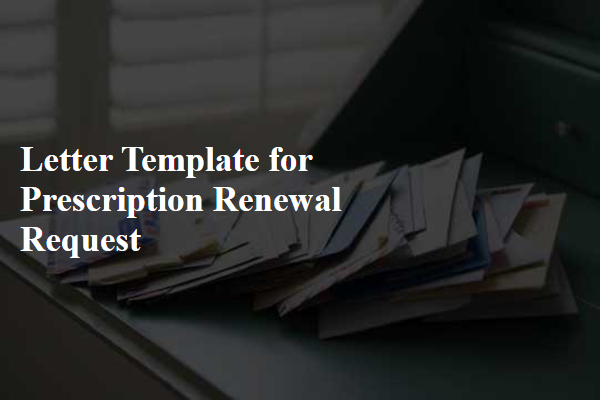
Patient Information
The prescription renewal request typically contains essential patient information, including the full name of the patient, date of birth (often formatted as MM/DD/YYYY), and current address (street, city, state, ZIP code). Additional identifiers may include the patient's phone number for communication purposes and their email address for electronic correspondence. The medical history pertinent to the prescription, such as previous medications taken, allergies (e.g., penicillin, sulfa drugs), and current health conditions (e.g., diabetes, hypertension), can be crucial. Identification of the prescribing physician is also significant, including the doctor's full name, contact information, and any specific pharmacy details where the prescription should be sent or picked up. Having this information organized is critical for ensuring timely processing and continuity of care.
Physician's Details
Physician's details include name, professional title, specialty, contact information, office address, and any relevant identification numbers. For instance, Dr. John Smith, MD, specializing in Internal Medicine, may have a contact number such as (555) 123-4567, with an office located at 123 Healthcare Lane, Cityville, State, ZIP Code. Inclusion of National Provider Identifier (NPI) number can verify identity and facilitate prescription processing. Additionally, providing the physician's fax number may streamline communication for prescription renewals with pharmacies.
Prescription Details
Prescription renewal requests require specific details to ensure accuracy and prompt processing. The patient's full name, date of birth, and contact information should be clearly provided. Include the name of the medication, dosage amount, prescribing doctor, and original prescription date for comprehensive reference. Indicate any refills left, along with the pharmacy's contact details for easy communication. For controlled substances, specify the schedule classification. It may also be beneficial to mention any current medical conditions or changes in health status that the doctor should consider during renewal.
Reason for Renewal
Chronic conditions such as hypertension require consistent medication management for optimal health outcomes. A prescription renewal for antihypertensive medications, like Lisinopril, is essential to maintain blood pressure control, targeting levels below 130/80 mmHg as per the American Heart Association guidelines. Regular usage helps prevent complications, such as heart attacks and strokes. Additionally, timely refills ensure patient adherence, minimizing gaps in treatment that could lead to health deterioration. Risk factors like age, family history, and lifestyle choices significantly influence the necessity for a continuous supply of necessary prescriptions.
Contact Information
Prescription renewal requests often require specific details to ensure efficient processing. Patient name (including middle initial) should be clearly stated, alongside date of birth (MM/DD/YYYY format) to distinguish identity. Address (street number, street name, city, state, zip code) must be included for verifying residency and insurance coverage. Contact number (including area code) should be provided for any follow-up questions, alongside email address for electronic communication. Additionally, pharmacy name and address (if applicable) will facilitate accurate prescription transfer. Health insurance information, including policy number and provider name, may also be necessary for billing purposes.
Letter Template For Prescription Renewal Request Samples
Letter template of prescription renewal request for pain management medication.
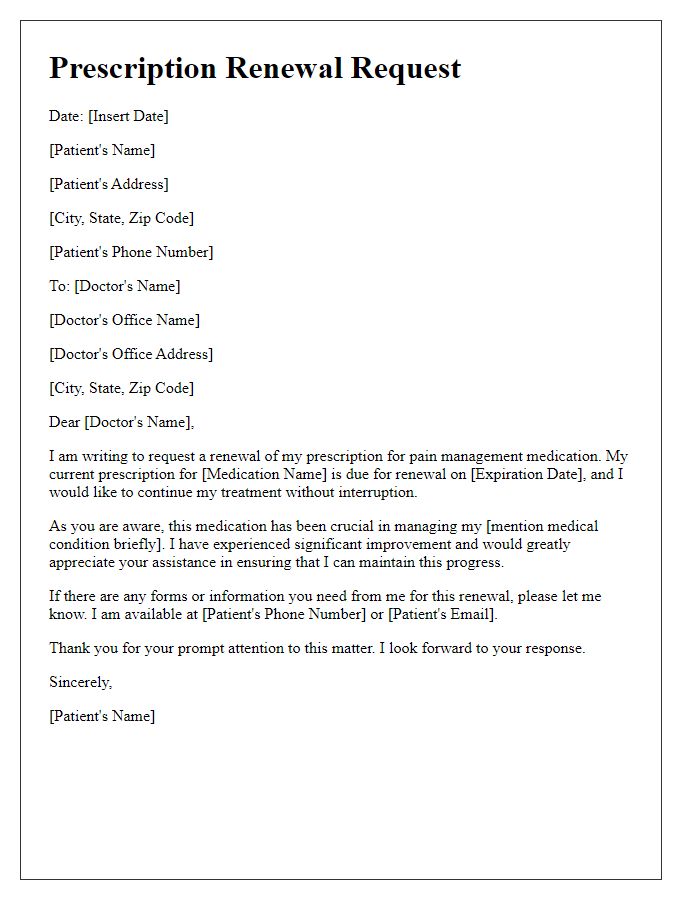
Letter template of prescription renewal request for mental health medication.
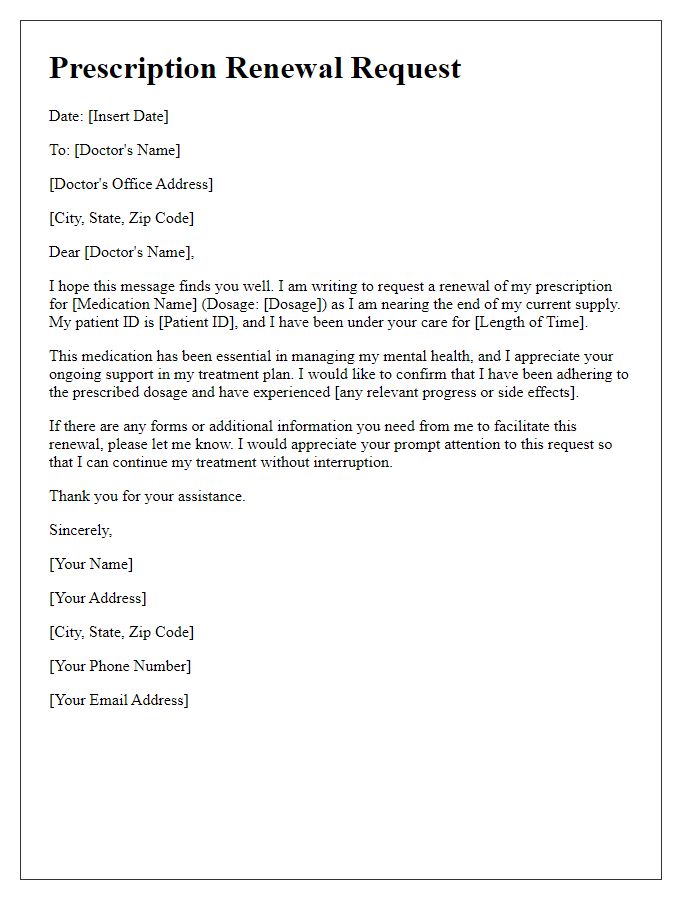
Letter template of prescription renewal request for diabetes management medication.
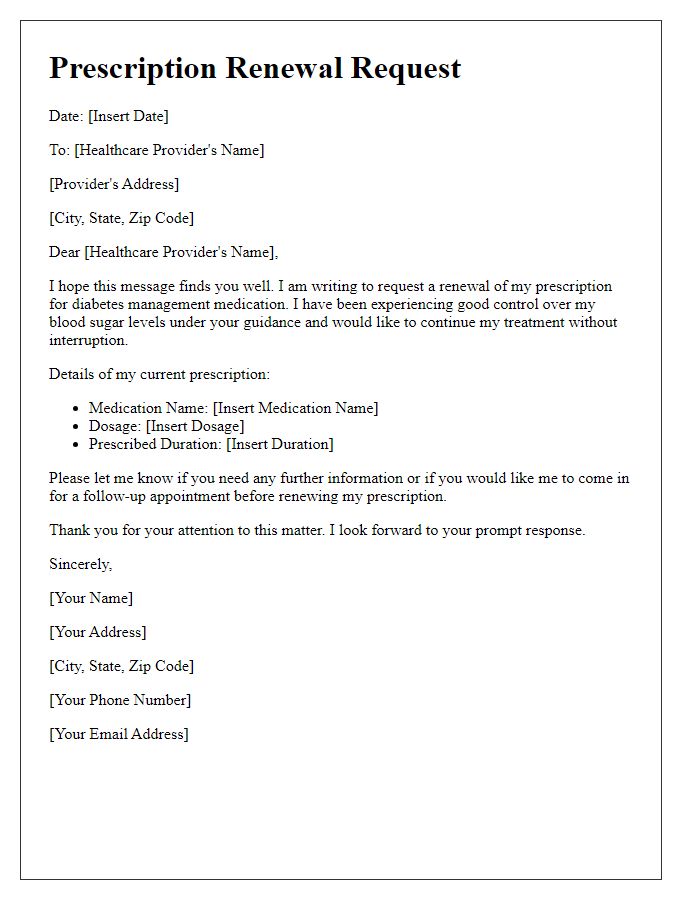
Letter template of prescription renewal request for blood pressure medication.
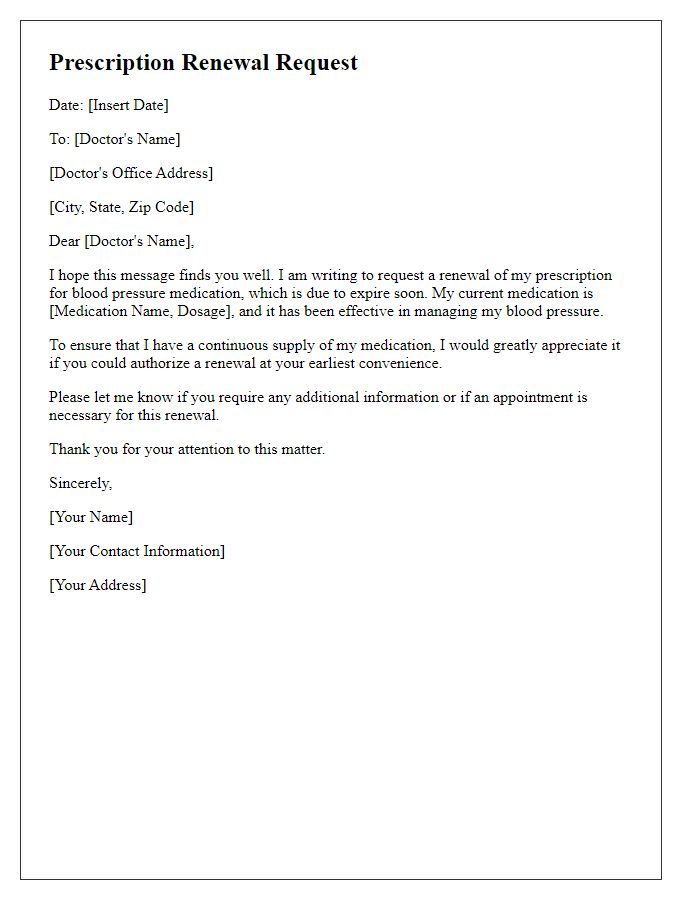
Letter template of prescription renewal request for cardiovascular health medication.
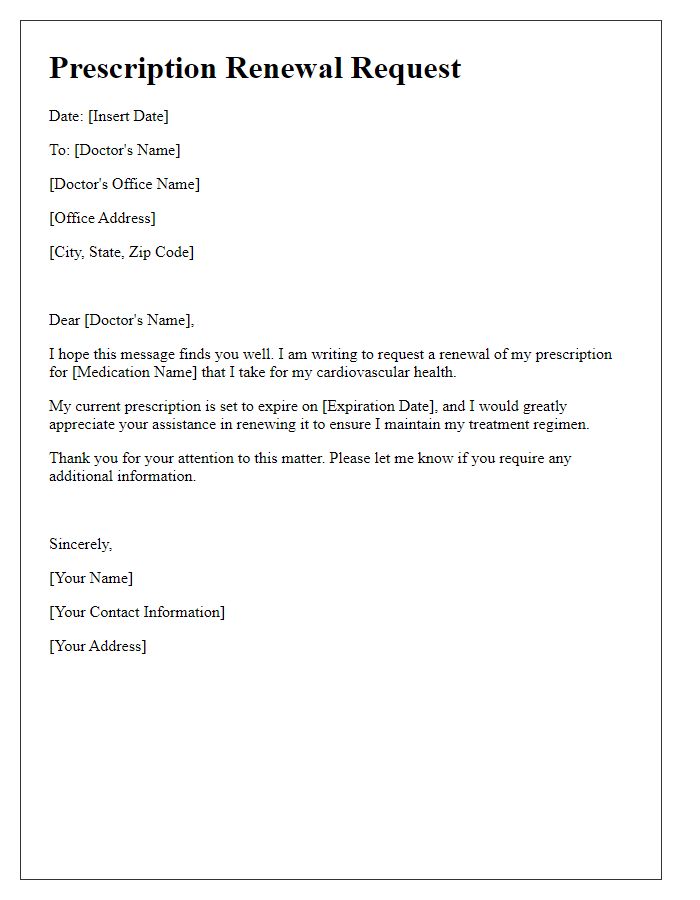

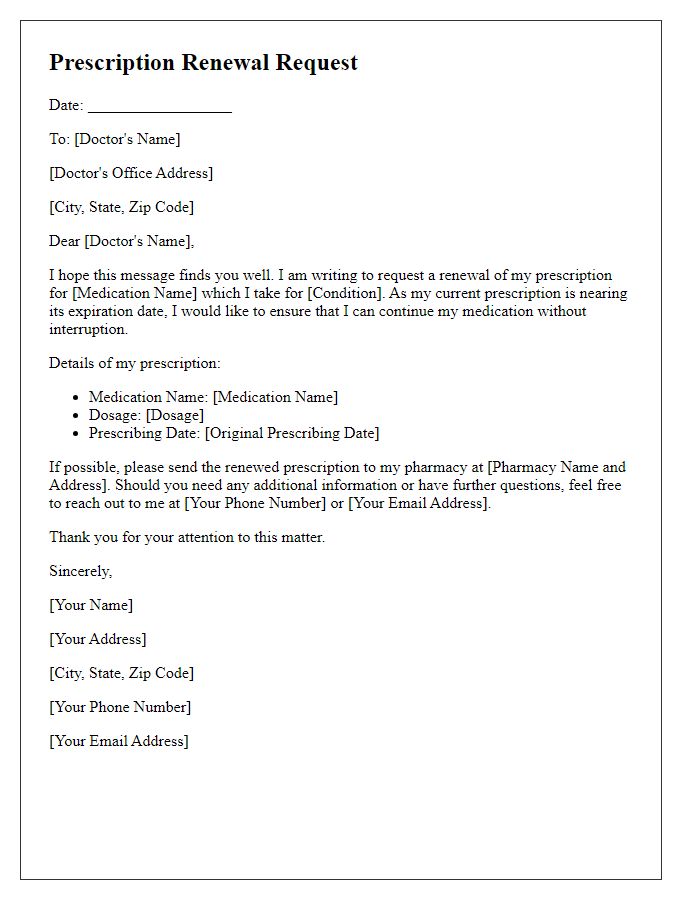
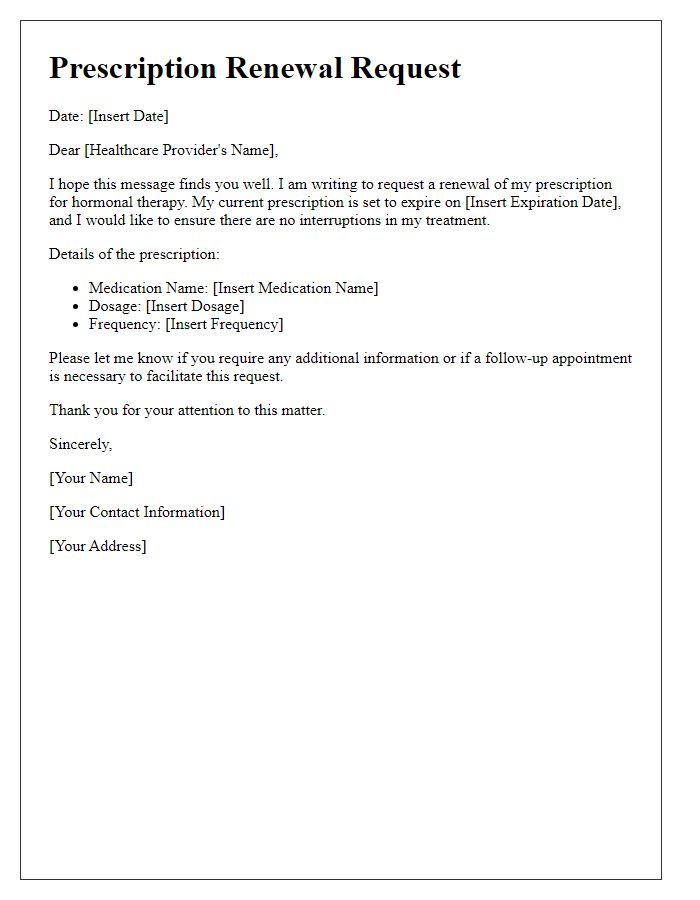
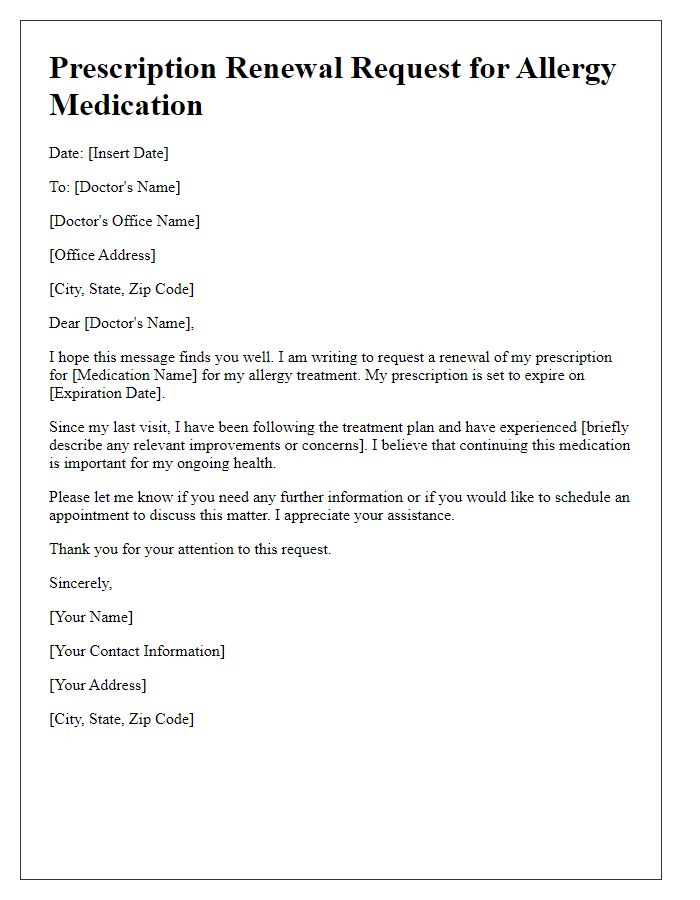
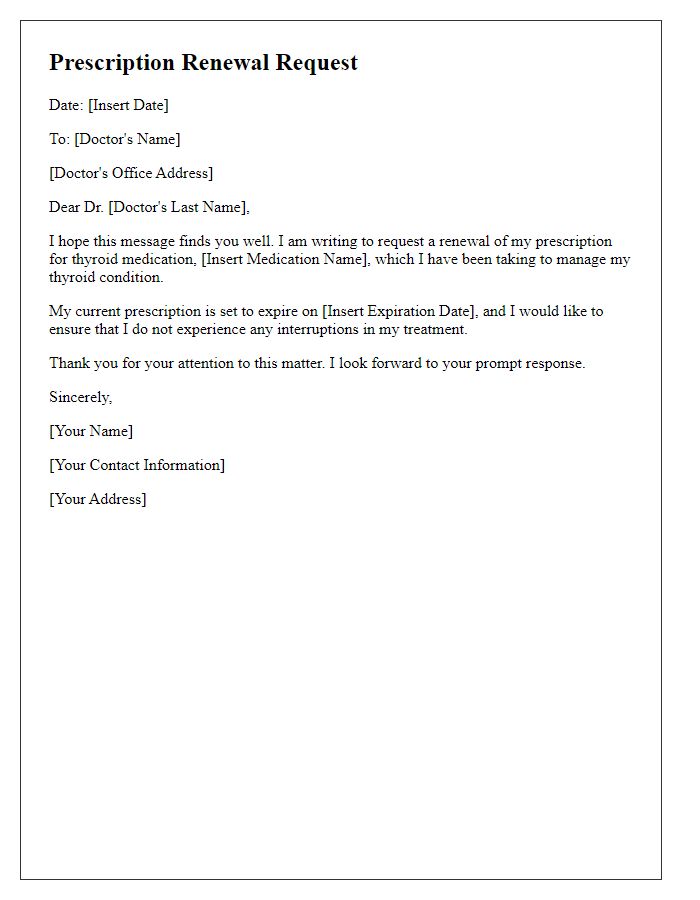
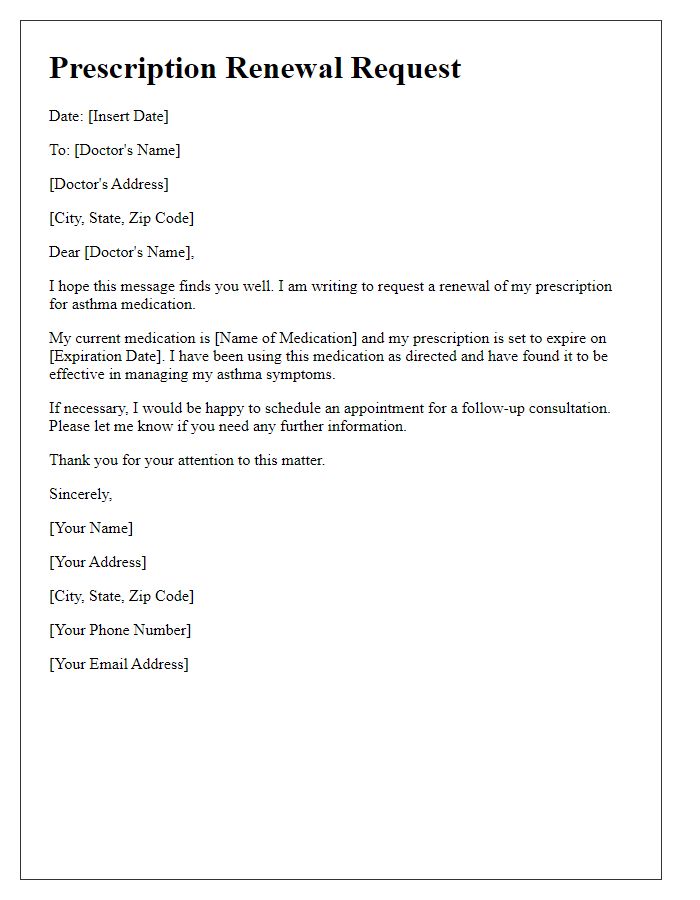


Comments